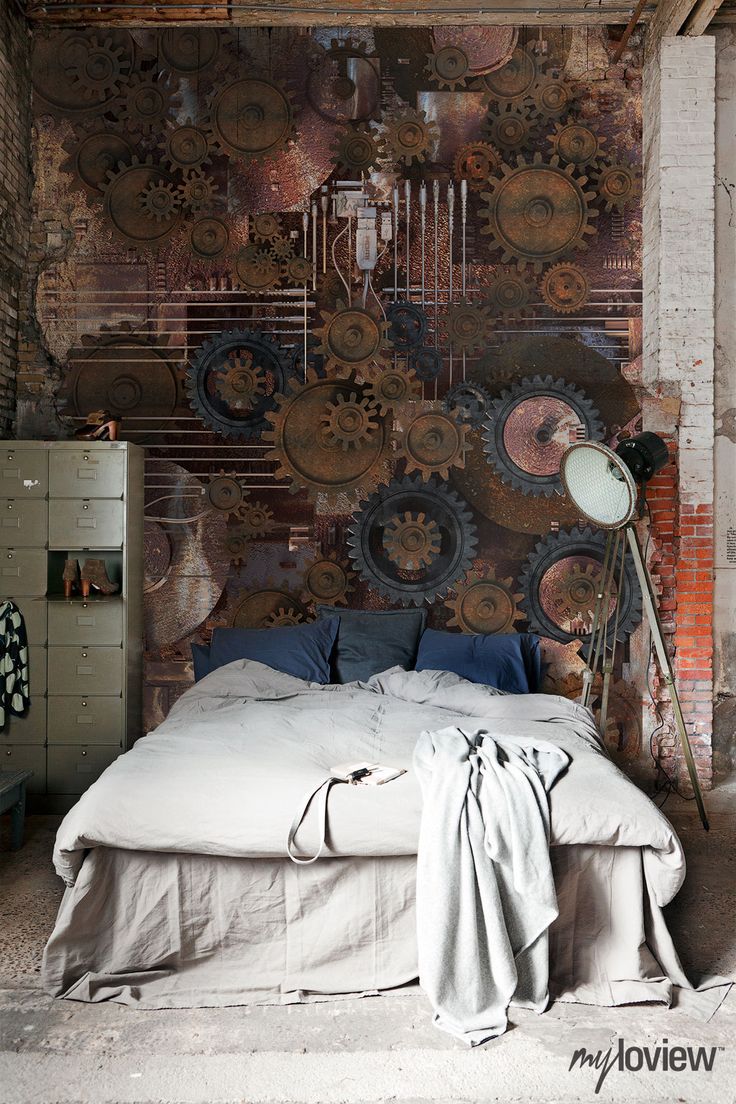The steampunk style is not one of the most well known in terms of interior design. Maybe that’s because many of us don’t even know which are the basic details that define this concept. When I say steampunk, I remember about the Victorian era, with all the inventions back then, but the meaning of this word would be incomplete without the industrial details.
In essence, this trend is a mixture between elegant Victorian interior accessories and the strength of industrial elements. Maybe you remember about Joben Bistro, that beautiful pub from Romania. It’s an inspiration for us.
So, give your home a steampunk look with these awesome décor ideas and items!
1. Use muted neutral colors
Brown, sepia, cream, black, dark red and dark green, these are the most common colors used to describe this style. Choose one of them according to the room, or combine them if you want. Also, metallic colors should work.
2. Don’t be afraid to use refurbished furniture

It’s a fact that old furniture adds a special charm to any home. If you want to create a steampunk interior design don’t even think about buying new furniture, unless it’s specific to Victorian age.
3. Add an industrial touch with exposed bricks


Another idea will be to induce an industrial feeling by showcasing exposed bricks walls. If the structure of the building doesn’t allow you to do that, use wallpaper.
4. Decorate with old maps


Create awesome wall murals using old maps, or just frame some of them and hang them on your walls. Another idea is to decorate the lampshades with maps. The older, the better! You’ll love the result!
5. Buy a terrestrial globe (in case you don’t have one already)

Make sure it’s old and very used. It would be one of the most popular items in the house, and kids would love to spin it over and over again.
6. Expose leather items or furniture


Leather sofa and chairs are definitely a must for steampunk admirers. It’s one of the most important materials used to define this trend. Not only comfortable, but also elegant, this material increases the luxury level of your home.
7. Classy hats will bring elegance and style

Top-hats or bowler hats can be used to impress your guests. Because they are symbols of the Victorian era, they will easily become a part of your steampunk decor.
8. Victorian sewing tables

A Victorian sewing table always has a history and that’s why it will easily become a new source of inspiration for your visitors. If you don’ t have such a beautiful item in your home, try the antique stores.
9. Decorate your walls with gear wall clocks


Gears are important items of the steampunk culture, so don’t forget about them. Let your imagination run wild! A gear wall clock will certainly make a statement, but you can also use them to create and display industrial art pieces.
10. Use an old steamer trunk as a living room table


Sometimes you must improvise in order to obtain the desired result. If you don’t have a proper table for this kind of interior design, use a steamer trunk or any other suitcase to fill the empty space.
11. Use exposed framed herbariums

Sometimes we do our best to properly decorate the rooms of our house, but we forget about the entrance. Your hallway would never look more beautiful and sophisticated without those framed herbariums.
12. Decorate with sepia pictures


Create an antique effect by using sepia photos to decorate your walls. It’s your choice whether you use old pictures with your family, or with other places around the world.
13. Add some details by exposing technical and anatomical drawings


These kinds of sketches are highly representative for this trend. If you happen to have something like that among your personal things or you’re an engineer, don’t hesitate to use them.
14. Expose antique items like barometers, telescopes or typewriters

Victorians had a passion for inventing new tools and gadgets, and the best part is the fact that you can still find them in antique shops. Even though many of them are not functional, you can use them as decorating items.
15. Try textural contrast

You can create a steampunk interior décor if you manage to combine a hard material (leather) and a soft one, like lace. So, part of the appeal of steampunk is the juxtaposition of traditionally feminine and masculine elements.
16. Expose a Victorian dress, or canes, or helmets on the wall

Maybe some of you will consider this a creepy idea, but I think it’s worth a chance. Canes or helmets are also a good choice, and they are certainly easier to find in antique shops.
17. Don’ t forget about small wood jewelry boxes

Walk up to your local hardware store and buy some small metal pieces like gears, or screws or anything else that could be glued to the wooden box. You won’t regret this!
18. Use wallpapers with a Victorian pattern

If you don’t really like those, and you happen to be a talented painter, try something new: paint some creatures in the books of Jules Verne, or some mechanical installations you remember from Time Machine.
19. Display old books

Old books are a must in this case! Hard covered books are usually used, but paperbacks are also welcomed. Old notebooks with leather covers will also make a statement if they are tastefully arranged.
20. Create a metal pipe bookshelf

Industrial all the way, even when we talk about ideas to display your books! Steel pipes are elementary in industrial design and quite easy to handle. Here we have a special article about how you can recycle steel pipes. Have a look!
21. Add a chandelier

Light fixtures are always important. Through light you can easily emphasize the interior design of the room and even the furniture. If you have high ceilings, use a chandelier. Bring a little luxury and comfort!
Source: homedit.com
























